Abstract
The organizing committee of a workshop on clinical practice guidelines (CPGs) surveyed invited organizations on their attitudes and activities related to five topics to be covered during the workshop sessions: organizational roles, priority setting, guidelines implementation, guidelines evaluation and development of a network of those active in the CPG field. Organizational roles: The national specialty societies were felt to have the largest role to play; the smallest roles were assigned to consumers, who were seen to have a role mainly in priority setting, and to industry and government, both of which were seen to have primarily a funding role. Many barriers to collaboration were identified, the solutions to all of which appeared to be better communication, establishment of common principles and clear role definitions. Priority setting: There was considerable agreement on the criteria that should be used to set priorities for CPG activities: the burden of disease on population health, the state of scientific knowledge, the cost of treatment and the economic burden of disease on society were seen as important factors, whereas the costs of guidelines development and practitioner interest in guidelines development were seen as less important. Organizations were unable to give much information on how they set priorities. Guidelines implementation: Most of the organizations surveyed did not actively try to ensure the implementation of guidelines, although a considerable minority devoted resources to implementation. The 38% of organizations that implemented guidelines actively listed a wide variety of activities, including training, use of local opinion leaders, information technology, local consensus processes and counter detailing. Guidelines evaluation: Formal evaluation of guidelines was undertaken by fewer than 13% of the responding organizations. All the evaluations incorporated assessments before and after guideline implementation, and some used primary patient data. Barriers to evaluation included lack of money, time, data or expertise. CPG Network: Most of the respondents felt that all organizations and individuals interested or involved in guidelines should form the membership of the network. The three most important functions of such a network were deemed to be (a) to facilitate collaboration among those involved in the CPG process, (b) to maintain an information centre on CPGs and (c) to provide expertise to the CPG process. It was felt that the network should have some formal structure and communicate through e-mail and print media.
Full text
PDF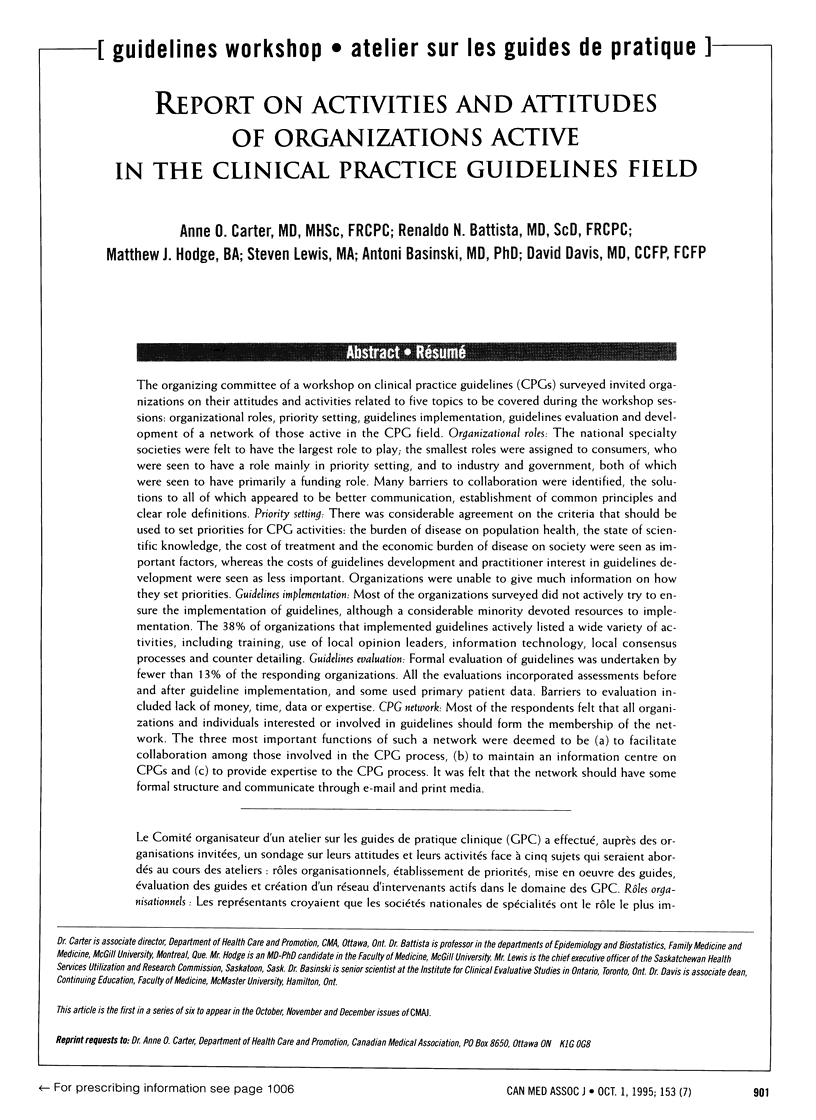
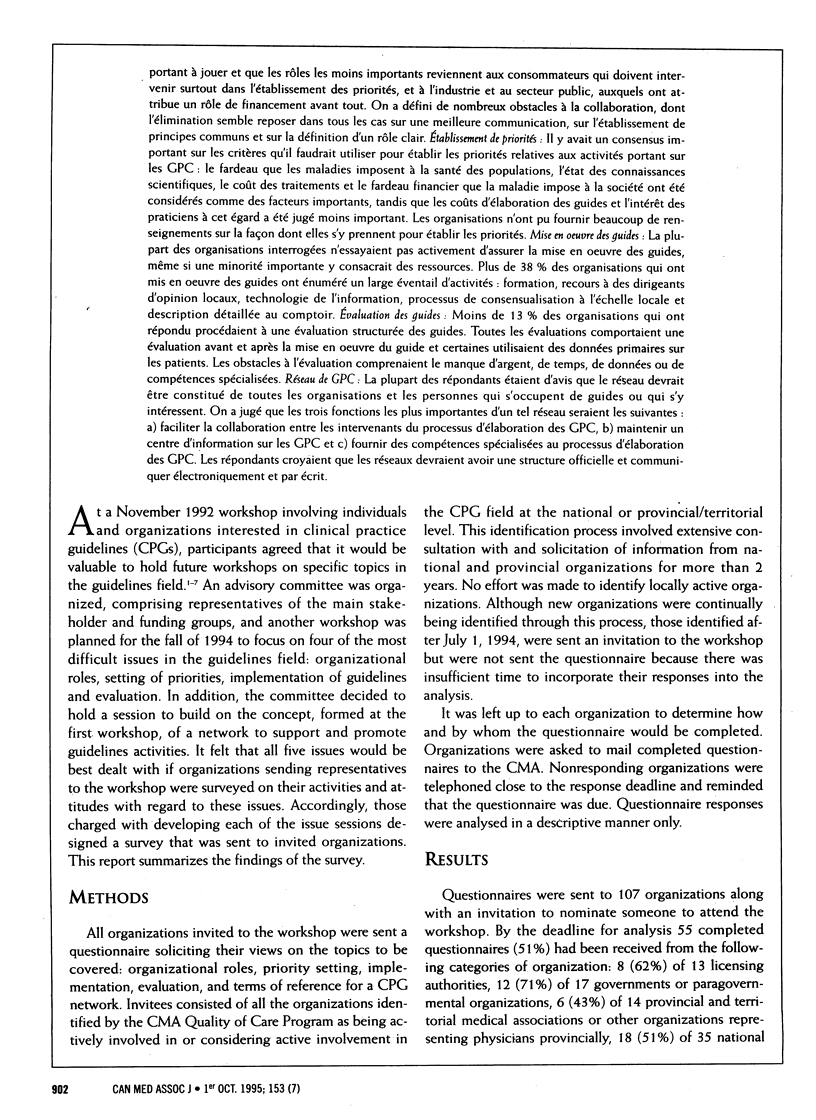
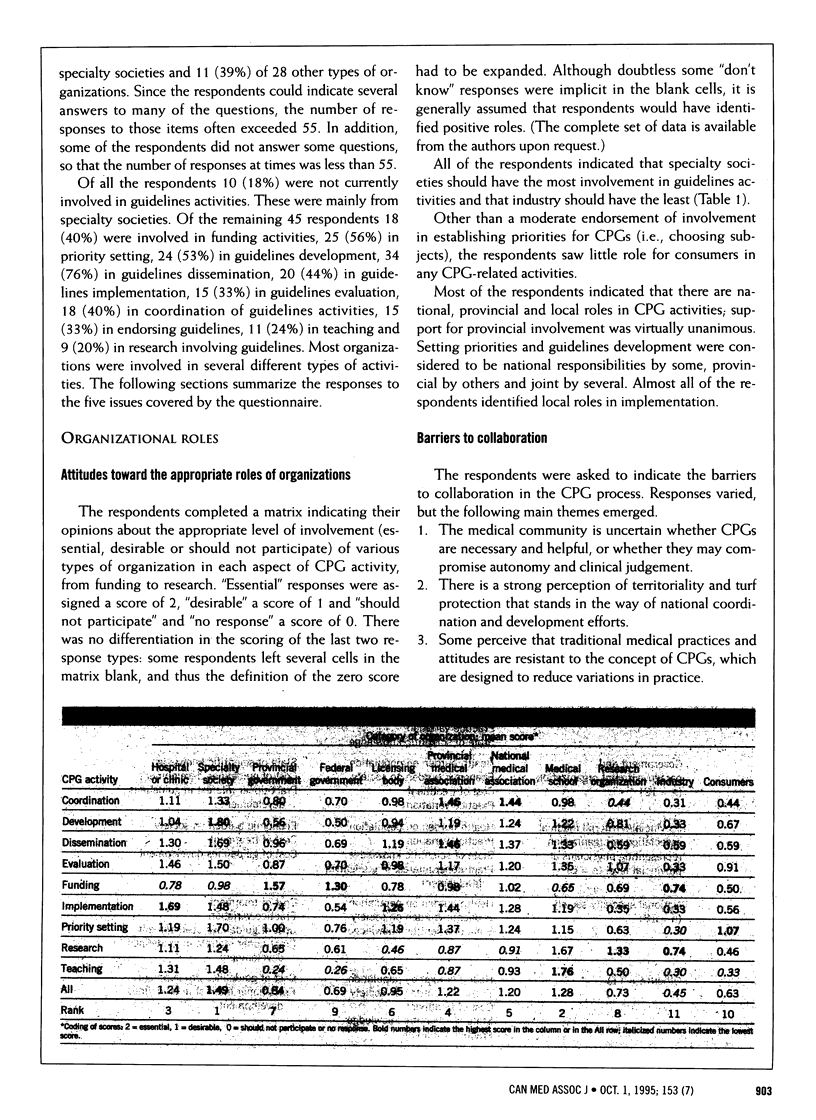
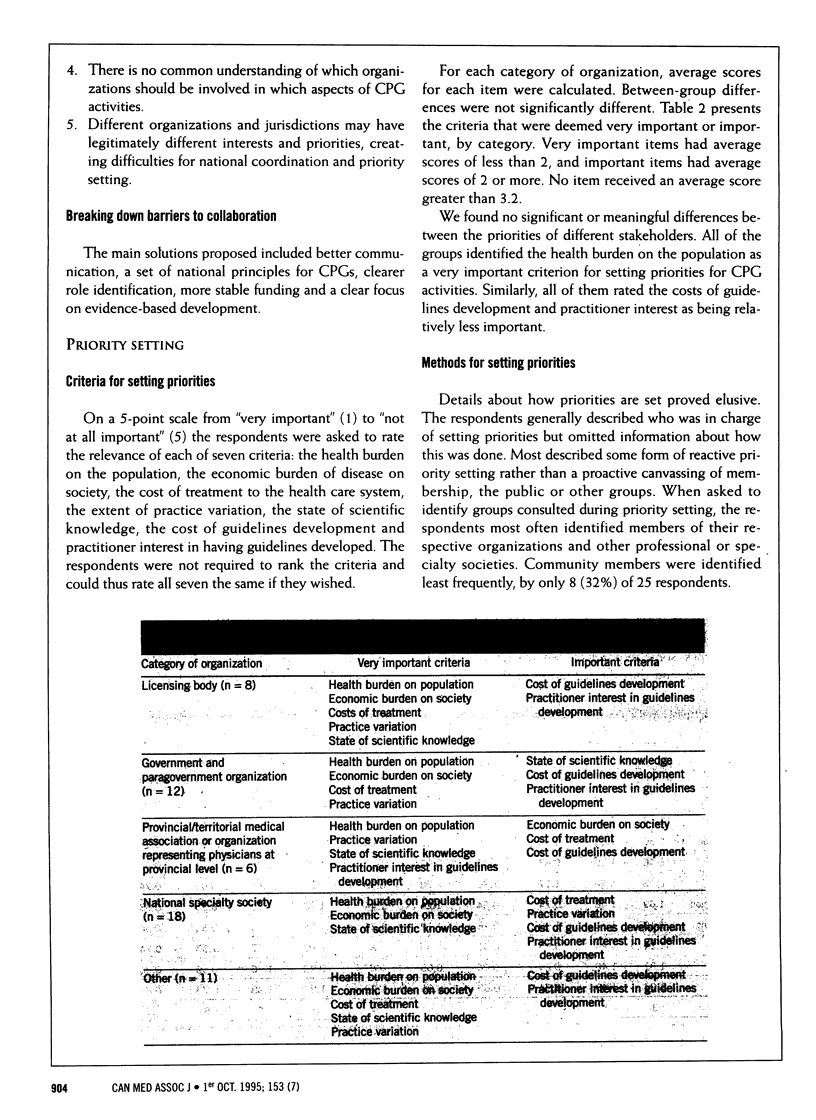
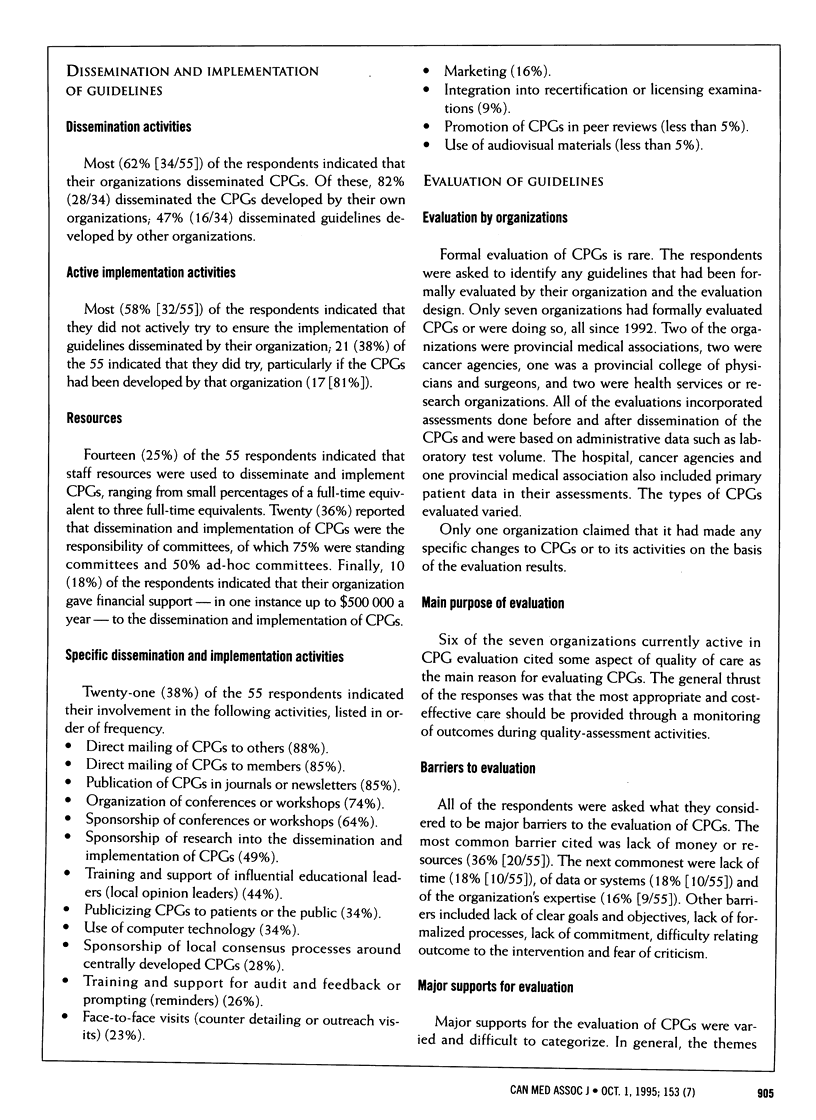
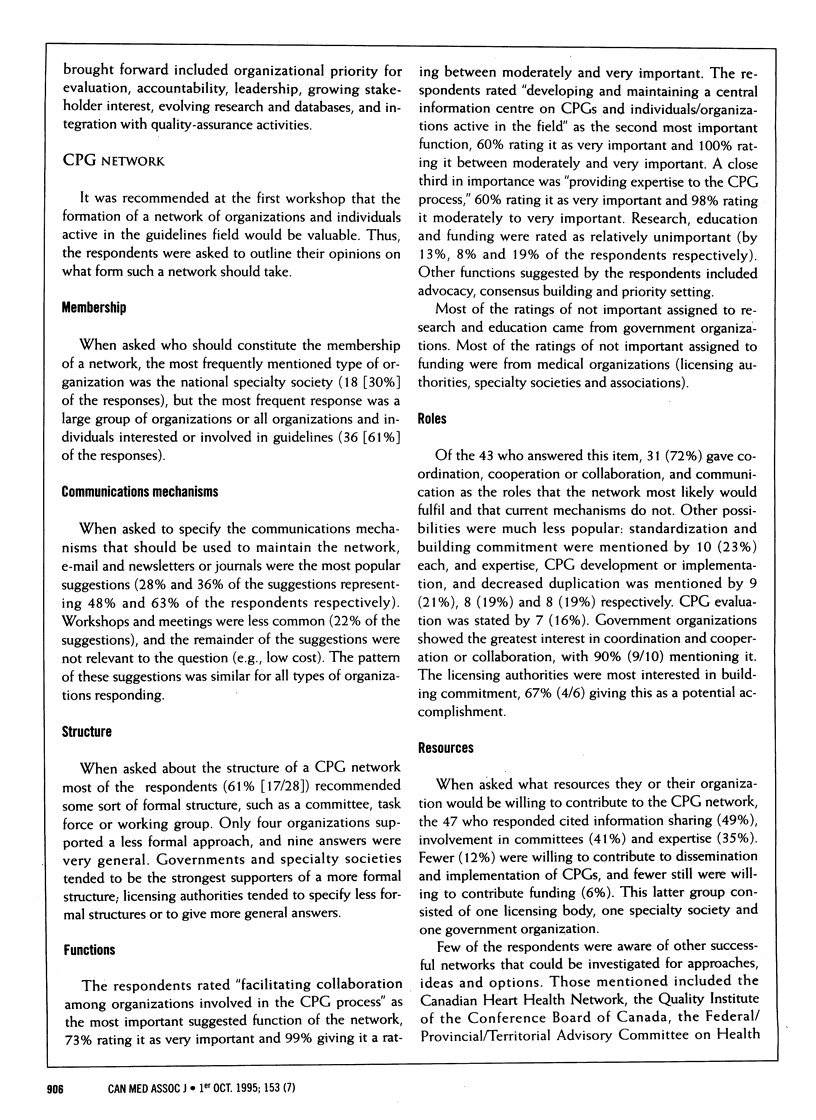
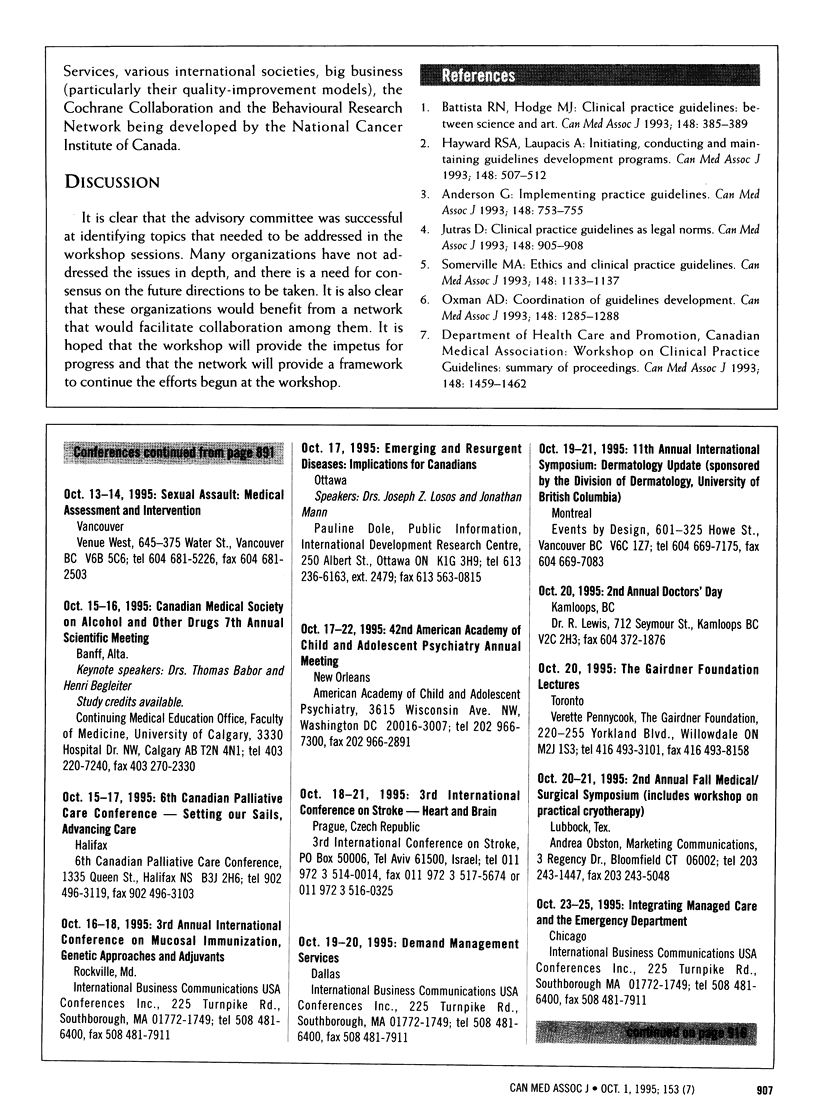
Selected References
These references are in PubMed. This may not be the complete list of references from this article.
- Anderson G. Implementing practice guidelines. CMAJ. 1993 Mar 1;148(5):753–755. [PMC free article] [PubMed] [Google Scholar]
- Battista R. N., Hodge M. J. Clinical practice guidelines: between science and art. CMAJ. 1993 Feb 1;148(3):385–389. [PMC free article] [PubMed] [Google Scholar]
- Hayward R. S., Laupacis A. Initiating, conducting and maintaining guidelines development programs. CMAJ. 1993 Feb 15;148(4):507–512. [PMC free article] [PubMed] [Google Scholar]
- Jutras D. Clinical practice guidelines as legal norms. CMAJ. 1993 Mar 15;148(6):905–908. [PMC free article] [PubMed] [Google Scholar]
- Oxman A. D. Coordination of guidelines development. CMAJ. 1993 Apr 15;148(8):1285–1288. [PMC free article] [PubMed] [Google Scholar]
- Somerville M. A. Ethics and clinical practice guidelines. CMAJ. 1993 Apr 1;148(7):1133–1137. [PMC free article] [PubMed] [Google Scholar]


